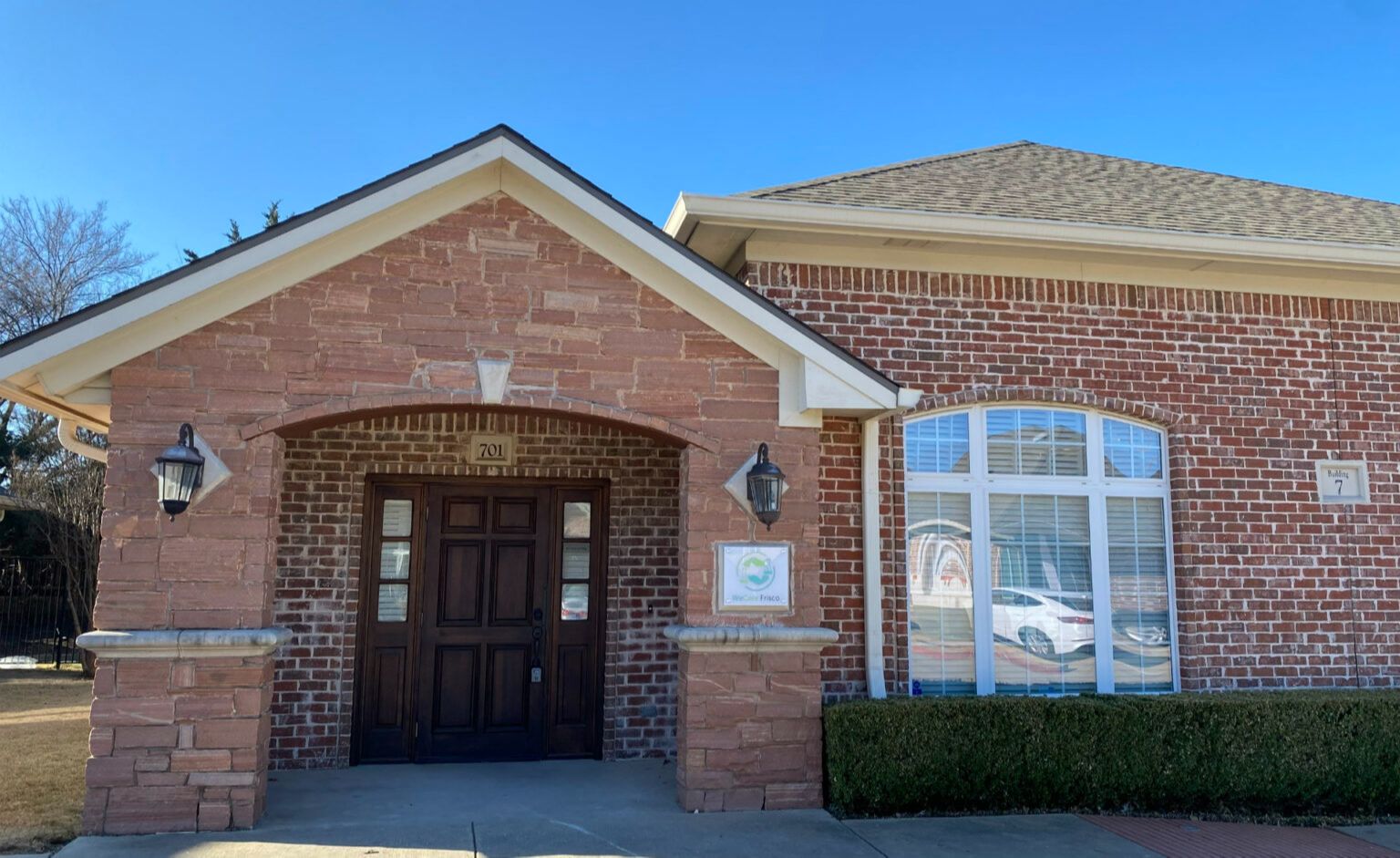
The Essentials of Sleep, Part 3 - Understanding Sleep Apnea: A Functional Medicine Perspective
Feb 04, 2025Jennifer Engels, MD
This article is the third in a 3-part series on sleep and its crucial importance to our overall health. Please visit here to read part one and click here to read part two.
This month I want to conclude our 3-part series on sleep with an examination of a common but often overlooked sleep problem; sleep apnea.
As we all know, sleep is essential for physical and emotional well-being, yet millions of Americans struggle with disorders that disrupt rest. Among the most common and serious is sleep apnea, a condition characterized by repeated interruptions in breathing during sleep. At WeCare Frisco, we take a Functional Medicine approach to understanding and addressing this complex issue, seeking to uncover and address its root causes for a comprehensive treatment plan.
What is Sleep Apnea?
Sleep apnea occurs when breathing repeatedly stops and starts during sleep. These episodes, known as apneas, can last from a few seconds to a minute and disrupt standard sleep patterns.
Sleep apnea falls into three categories:
- Obstructive Sleep Apnea (OSA): The most common form of sleep apnea is caused by a physical airway blockage, often due to relaxed throat muscles.
- Central Sleep Apnea (CSA): Stemming from the brain's failure to send proper signals to control breathing.
- Complex (Mixed) Sleep Apnea: A combination of the obstructive and central types.
Common symptoms include loud snoring, choking or gasping for air during sleep, excessive daytime fatigue, and morning headaches. Left untreated, sleep apnea can increase the risk of severe health conditions such as high blood pressure, heart disease, and stroke, which I will discuss later in this article.
What Causes Sleep Apnea?
The causes of sleep apnea vary depending on its type.
For OSA, contributing factors include:
- Obesity: Excess weight around the neck can narrow the airway.
- Anatomical factors: A small jaw, large tonsils, or other structural issues.
- Lifestyle habits: Smoking, alcohol use, and poor sleep hygiene.
For CSA, the causes often involve neurological conditions or heart disease that interfere with the brain's ability to regulate breathing.
Additionally, age, genetics, and hormonal imbalances (such as low thyroid function) can predispose individuals to all types of sleep apnea.
How Common is Sleep Apnea?
Sleep apnea is far more common than you might expect, affecting millions of Americans. Here's what you need to know about its prevalence:
- About 30 million Americans, roughly 12% of adults, have sleep apnea. However, some estimates suggest that up to 26% of adults between 30 and 70 might have this sleep problem.
- Men are more likely to have sleep apnea than women, especially in middle age. For people under 50, men are two to three times more likely to develop the condition compared to women. However, after age 50, the risk for women increases, narrowing the gap and making it more comparable to that of men.
- As people get older, they're more likely to develop sleep apnea. By age 65, as many as 32% of people might have it.
- Children can also have sleep apnea. It's estimated that 1 percent to 10 percent of children are affected by this condition.
It's worth noting that many people with sleep apnea don't know they have it. Experts think that about 80% of people with sleep apnea haven't been diagnosed. This means a lot of people might be dealing with sleep apnea without even realizing it.
In summary, sleep apnea is quite common, affecting both adults and children, with men being at higher risk, especially in middle age. However, many cases go undiagnosed, making it a hidden health issue for many Americans.
Sleep Apnea’s Threat to Your Health
Unfortunately, I fear that many underestimate the serious threat sleep apnea can pose to your health. Sleep apnea is more than just loud snoring or feeling tired. As I have said, it’s a condition where breathing stops and starts repeatedly during sleep. This interruption of your normal breathing disrupts the oxygen flow to your brain and body, putting immense stress on your system.
Over time, untreated sleep apnea can lead to serious health problems like high blood pressure, heart disease, stroke, and even diabetes. It also saps your energy, impairs focus, and can even affect your mood, increasing the risk of depression.
What makes sleep apnea particularly dangerous is how stealthy it can be. Again, as I have said, many people don’t even realize they have it. You might think you’re just tired or stressed, but the real culprit could be poor-quality sleep caused by interrupted breathing.
Left unchecked, sleep apnea doesn’t just rob you of rest—it can shave years off your life. Recognizing and addressing it early is key to protecting your health and reclaiming restorative sleep.
Conventional Treatment Options for Sleep Apnea
Treatment for sleep apnea varies depending on its severity and underlying causes. Here are some common approaches, along with their benefits and drawbacks.
1. CPAP Machines (Continuous Positive Airway Pressure)
A CPAP machine is one of the most commonly prescribed treatments for moderate to severe obstructive sleep apnea (OSA). It delivers a steady stream of air through a mask worn over the nose or mouth, keeping the airway open during sleep.
How It Works: The continuous air pressure prevents the collapse of airway tissues, eliminating or reducing apneas.
Pros:
- It is highly effective for reducing apneas and improving sleep quality.
- Reduces associated risks, such as heart disease and stroke.
- It can lead to immediate improvements in energy levels and daytime focus.
Cons:
- Some users find the mask uncomfortable, causing irritation or difficulty sleeping.
- The machine can be noisy, disrupting sleep for light sleepers or their partners.
- Requires consistent use for benefits, which can be a challenge for compliance.
2. Oral Appliances
Oral appliances are custom-fitted devices worn in the mouth during sleep. They are primarily recommended for individuals with mild to moderate OSA or those who cannot tolerate CPAP therapy.
How It Works: These devices reposition the jaw or tongue to prevent airway obstruction. The most common are mandibular advancement devices (MADs), which move the jaw slightly forward to keep the airway open.
Pros:
- They are easier to use and more portable than CPAP machines, making them ideal for travel.
- Non-invasive and typically well-tolerated by patients.
- Effective in reducing snoring and mild OSA symptoms.
Cons:
- May cause jaw pain, stiffness, or changes in bite alignment with long-term use.
- Less effective for severe cases of OSA.
- Requires regular adjustments and follow-ups with a dentist or sleep specialist.
3. Surgical Options
Surgery is often considered when other treatments are ineffective or when anatomical issues are the primary cause of sleep apnea. Several surgical procedures are available, depending on the patient's specific needs:
- Uvulopalatopharyngoplasty (UPPP): Removes excess tissue in the throat to widen the airway.
- Genioglossus advancement: Moves the tongue muscle attachment forward to prevent airway collapse.
- Maxillomandibular advancement (MMA): Repositions the upper and lower jaw to enlarge the airway.
- Inspire Therapy (Hypoglossal Nerve Stimulation): A newer, implantable device that stimulates the tongue muscles to maintain an open airway during sleep.
Pros:
- It may provide a permanent solution, especially for patients with anatomical causes.
- Reduces or eliminates the need for devices like CPAP or oral appliances.
Cons:
- Involves surgical risks such as infection, bleeding, or complications from anesthesia.
- Recovery can be uncomfortable and lengthy.
- Effectiveness varies, and some procedures may not fully resolve apnea.
4. Lifestyle Modifications
Lifestyle changes are foundational in managing sleep apnea, especially for individuals with contributing factors such as obesity or poor habits that impact sleep quality.
How It Works: Changes target root causes, such as excess weight, poor sleep hygiene, or inflammatory conditions, to reduce airway obstruction naturally.
Key Strategies:
- Weight Loss: Even a modest weight reduction can significantly improve OSA symptoms.
- Positional Therapy: Encouraging side-sleeping to prevent airway collapse.
- Avoiding Alcohol and Sedatives: These substances relax airway muscles, worsening apnea.
- Improving Sleep Hygiene: Consistent bedtime routines and reducing screen time can enhance sleep quality.
Pros:
- Non-invasive and holistic, benefiting overall health.
- Can address underlying causes, potentially reducing the severity of sleep apnea over time.
Cons:
- Results take time and require dedication and consistency.
- It may not be sufficient as a standalone treatment for moderate or severe sleep apnea.
Functional Medicine’s Approach to Sleep Apnea
In my medical practice, I have often found, unfortunately, that many who may be suffering from sleep apnea avoid seeking help, believing the cumbersome and frequently inconvenient CPAP machine is their only treatment option.
In reality, nothing could be further from the truth. In addition to the mandibular advancement devices (MADs) I mentioned, several other non-invasive treatment options for sleep apnea exist. Among others, these include:
- MyoTape: This is a type of mouth tape that treats sleep apnea by gently encouraging nasal breathing during sleep, which helps maintain an open airway. Tapping around the mouth rather than sealing it shut supports the lips to stay closed while allowing emergency oral breathing if needed. This promotes better oxygen flow, reduces snoring, and can alleviate mild obstructive sleep apnea symptoms when used with other treatments.
- Intake Nasal Strips: These nasal strips gently lift and open the nasal passages, increasing airflow through the nose. This can reduce nasal congestion and improve breathing, which is essential for maintaining an open airway during sleep. By enhancing airflow, nasal strips can help alleviate snoring and reduce the severity of mild obstructive sleep apnea, particularly in individuals whose symptoms are linked to nasal obstruction.
- Inspire Device: This implantable treatment for obstructive sleep apnea stimulates the hypoglossal nerve, which controls the tongue and other airway muscles. It is activated during sleep to prevent airway collapse by gently moving the tongue and maintaining an open airway. This device is designed for patients who cannot tolerate CPAP therapy, and it is controlled via a small remote for personalized use.
In addition to possibly using one of these alternatives to CPAP therapy, at WeCare Frisco, we go beyond symptom management to uncover the root causes of sleep apnea. A Functional Medicine evaluation may include:
- Comprehensive Assessments: Review lifestyle, diet, and environmental factors contributing to airway obstruction or inflammation.
- Nutritional and Hormonal Support: Optimizing weight, reducing inflammation, and balancing hormones to improve sleep quality.
- Stress Management: Addressing stress and its impact on breathing through mindfulness techniques and lifestyle changes.
- Collaboration with Specialists: Coordinating care with sleep medicine experts while offering a holistic framework.
This integrative approach alleviates sleep apnea symptoms and promotes overall health and vitality.
Take the First Step Toward Better Sleep
If you or a loved one suffers from sleep apnea, you don’t have to face it alone. At WeCare Frisco, we specialize in uncovering the root causes of health issues and developing personalized, sustainable treatment plans. Call the clinic at (972) 668-2636 or click here to get started with a Foundational Assessment and start your journey toward better sleep and improved health. We have also partners with the sleep experts at Empower Sleep to offer a 30-day sleep assessment. Click here to learn more about this amazing program and get a special discount! Together, we can create a plan that helps you reclaim restful nights and energized days.
Let’s make good sleep your reality. Contact us now to begin!



